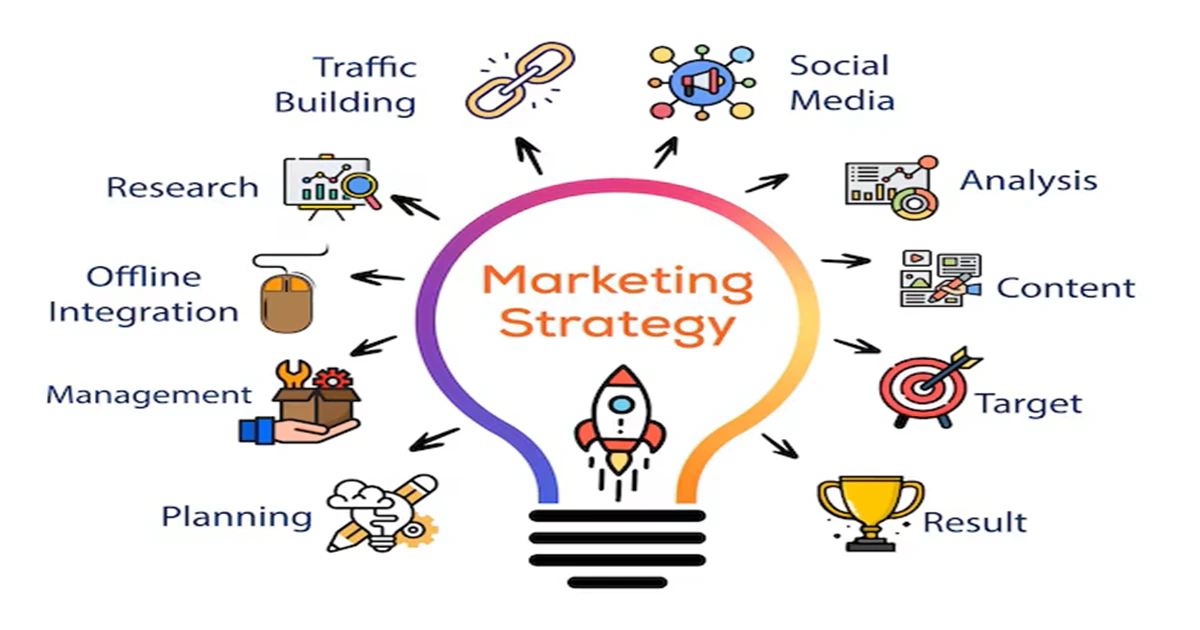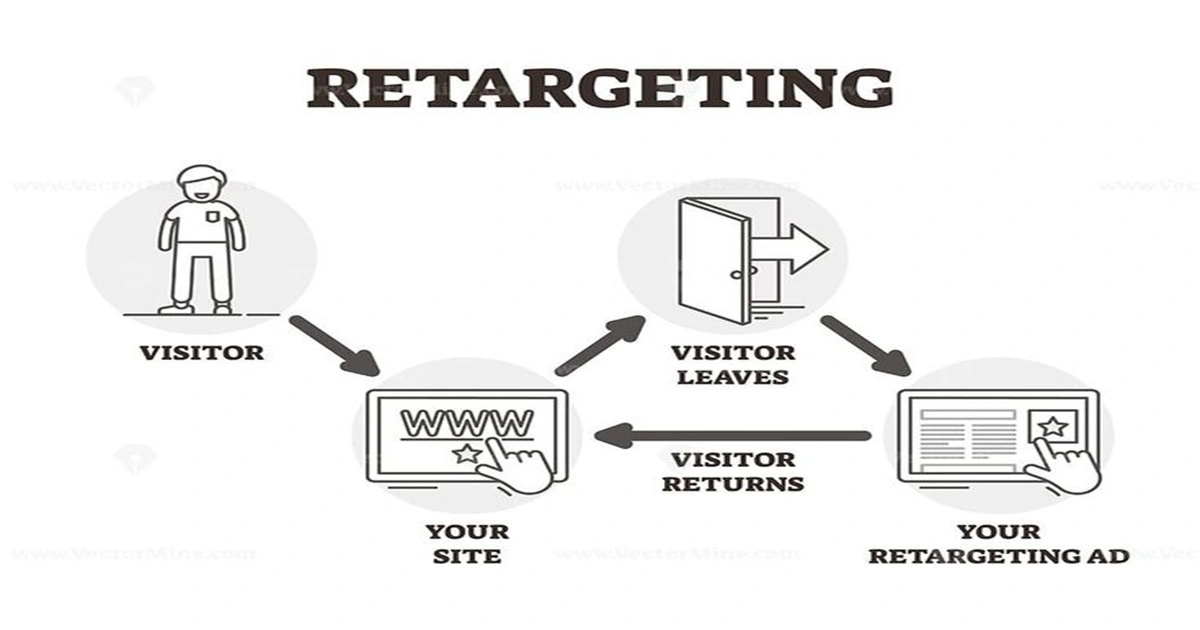Introduction
Imagine seeing a product online, deciding to come back later, and then forgetting all about it. For most businesses, that happens all the time. Visitors often leave websites without converting, even though they’re genuinely interested. That’s where retargeting shines.
Retargeting is a powerful method that reminds these visitors about your product and services when they go to other websites on the internet. It takes advantage of their interest already built and softly nudges them again towards a purchase. And the best part—Remarketing works. Studies have continually proven that properly executed Remarketing campaigns can increase conversion rates by up to 70% or more.
But why does Remarketing work so well? Simply put, people don’t always buy on the first visit. They shop around, compare, and ponder. Remarketing keeps your brand top of mind while they’re deciding. It’s like a persistent, gentle companion that follows them around the web (in a good way!) and reminds them of what they left behind.
In this blog, we’ll go over tried-and-tested retargeting methods that convert more. Regardless of whether you’re a Remarketing rookie or an old hand, you’ll discover methods that give you maximum ROI and allow you to turn lukewarm visitors into passionate, loyal customers. So sit back, buckle up, and get set to become a Remarketing wizard and send your business soaring.
What is Retargeting?
Retargeting is a form of online advertising that allows you to reconnect with users who have previously visited your website, app, or online store. It works by placing a small piece of code (a pixel) on your site. When a user visits your page, the pixel adds the user to a Remarketing list and exposes the user to targeted ads when they visit other sites and social media.
As opposed to standard advertising that targets a large, typically cold audience, Remarketing targets users who are already acquainted with you. This renders them warmer leads that require less convincing to move towards a conversion. Think of Remarketing as a follow-up strategy that reinforces your message, offers a timely reminder, and reawakens interest at important times.
Retargeting can take many forms:
- Site Remarketing targets all or certain visitors after they leave your site.
- Search retargeting targets users by their search behavior.
- Social media retargeting serves users on Facebook, Instagram, or LinkedIn.
- Email Remarketing reopens communication with your email subscribers and cart abandoners.
At a basic level, retargeting solves a simple yet vital problem: most people won’t purchase immediately. Even a perfectly optimized website might only see a small percentage of first-time visitors convert. Remarketing creates an additional (or second, or third) chance to engage with those visitors at a point when they’re in a better position to act.
Why It Matters
Investing in retargeting is crucial since customers don’t tend to buy on impulse. Research has revealed that customers require multiple touchpoints before they’re willing to buy. Remarketing provides these touchpoints at the precise location and moment.
Consider the competitive online landscape: countless companies compete for attention. Without remarketing, that attention is lost. Remarketing reminds people that you exist and shows them personalized messaging depending on where they are in the buying process. If someone visited a product page, a blog post, or added items to their shopping cart, your Remarketing campaign can market exactly what they need.
Also, Remarketing allows for very granular targeting. You can segment audiences by behavior, engagement level, or product interest. This level of precision not only boosts relevance, it also reduces wasteful ad spend. Every impression and click is directed toward someone already likely to say “yes.”
Finally, retargeting matters because its impact is measurable. It can drastically improve the ROI of your marketing by improving click-through rates, return visits, and most importantly, conversions. It’s one of the most cost-effective and tested ways of turning abandoned sessions into sales.
Features of retargeting
Tactically deployed, retargeting delivers a multitude of features and benefits that make it indispensable for modern marketing.
- Increased conversion rates:
The most direct benefit of retargeting is boosting your conversion rates. By marketing to those who have already expressed interest, you’re selling to warm leads that require less convincing than a brand-new person. - Improved brand recall:
Repeated exposure to your brand nurtures awareness and trust. Retargeting places your logo, products, and offers in front of people across their favorite websites and social feeds, helping you stay top-of-mind. - Personalized messaging:
One of the most powerful aspects of Remarketing is its capacity for personalization. Show visitors the exact products they browsed or create dynamic ads that feature recommended items they’re likely to appreciate. - Budget efficiency:
By advertising to people who already recognize your business, you’ll make better use of your ad spend. Retargeting is often cheaper per conversion than reaching cold audiences. - Cross-platform engagement:
No matter if one surfs using a laptop or browses social feeds using a phone, Remarketing follows them across devices, creating a seamless experience that leads them towards making a purchase.
Case Studies
To witness the power of retargeting in action, let’s look at a couple of successful case studies:
- Shopify’s Cart Abandonment Retargeting:
Shopify sellers use dynamic retargeting to recover abandoned carts. People who add products to their carts but do not purchase them see those same products featured in Remarketing ads on Facebook and Instagram. This strategy brings up to 50% higher recovery rates for abandoned carts, giving a healthy ROI - Outdoor Retailer Drives Repeat Visits:
An outdoor sporting goods retailer developed a retargeting campaign that targeted past visitors who browsed tents and sleeping bags. Targeted ads with particular discounts and seasonal offers were shown on the Google Display Network. It drove 35% more return visitors and boosted sales by 28% in three months. - SaaS Company Increases Demo Signups:
A SaaS company retargeted blog readers who hadn’t requested a demo. They employed engaging, value-driven creative and an offer that couldn’t be refused to create a 40% increase in demo signups within six weeks.
Each of these examples points to the power of Remarketing as a conversion driver. With precise delivery of the appropriate message at the correct time, small and large businesses can reap big dividends.
How to Use or Implement
It doesn’t need to be fancy to execute a retargeting campaign. Use this simple step-by-step guide to begin:
- Define your goals:
Determine what you want your Remarketing campaign to accomplish. Do you want to recover abandoned carts, generate leads, boost newsletter sign-ups, or win back lost customers? Clarity on goals will dictate every other decision. - Install your pixel:
Deploy retargeting pixels on your site. Big platforms like Facebook and Google Ads make it simple with pre-tagged code snippets you insert in your site header. - Create audience segments:
Segment visitors into lists based on behavior. Examples include “Product page visitors,” “Checkout abandoners,” and “Content readers.” These segments allow you to craft messages that feel tailored. - Develop tailored ads:
Create ads that address the buyer’s interest or journey phase directly. Leverage dynamic content like products viewed previously or temporary price discounts to compel action. - Set up frequency and timing:
Avoid overwhelming prospects. Leverage impressions per user per day limits and time adjustments so retargeting ads appear when best. - Test and optimize:
Keep an eye on performance and make continuous changes to creative, audience parameters, and bidding strategy. Remarketing is about constantly refining.
With optimal setup, retargeting is a fairly low-maintenance form of campaign that pays big dividends.
Conclusion
Retargeting is likely your most cost-effective, high-ROI strategy you can insert into your marketing toolkit. It closes a white space gap by reaching out to people who already know your brand but have not taken that final step toward conversion. With thoughtful intent—targeted messages, well-defined segments, and continuous optimization, Remarketing can rescue lost sales, drive engagement, and help you grow sustainably.
If you want to maximize the value you’re getting from your marketing investment, Remarketing is a no-brainer. It allows you to get the most out of your advertising budget and close the deal on visitors who would otherwise slip away forever. A small investment in Remarketing can make a material difference to your bottom line.
Ready to get started? Test these proven retargeting strategies and monitor your progress closely. With persistence and creativity, you’ll build campaigns that drive more conversions and foster lasting relationships with your customers.
FAQs
Q: What is retargeting, and why is it important?
Retargeting is a web advertising strategy that re-engages with users who have already stopped by your site but did not act. It is important because not everybody purchases for the first time. Remarketing reminds them of your product and encourages them to buy.
Q: What is the distinction between retargeting and remarketing?
While sometimes being used interchangeably, Remarketing tends to suggest cookie- or pixel-based advertisements on third-party websites, while Retargeting tends to suggest reaching existing customers through email. Both are intended to re-market potential clients.
Q: How long should I run a retargeting campaign?
Depends on your sales cycle. Most marketers use constant campaigns with a 30-90 day cookie period, changing the length to correspond with your buyer’s typical decision-making period.
Q: Must I have a big budget for retargeting?
Nah! Retargeting works with nearly any size budget. Begin small and expand as you gain returns.
Q: What kinds of businesses can benefit from retargeting the most?
Any business that has an online presence can benefit. E-commerce websites, service providers, SaaS companies, and content publishers all leverage retargeting to generate conversions.









